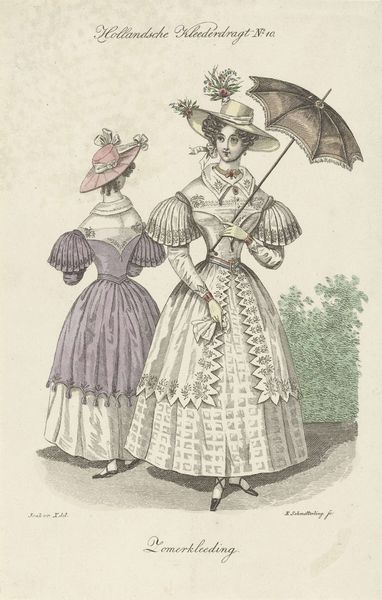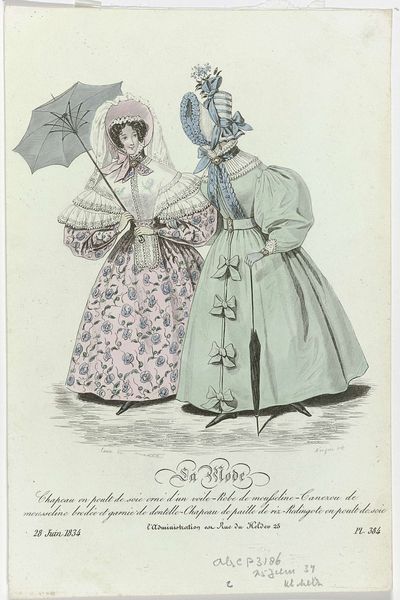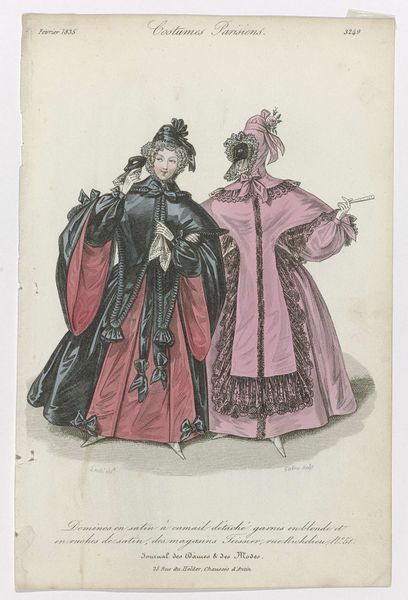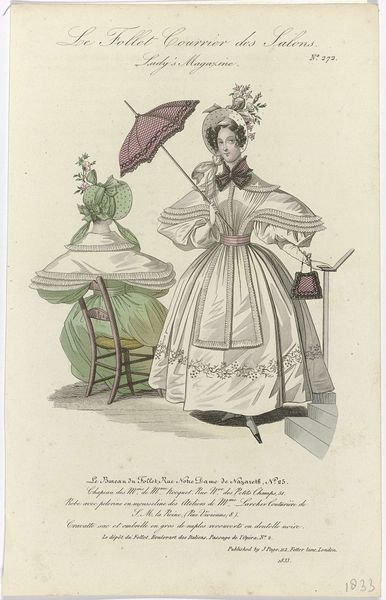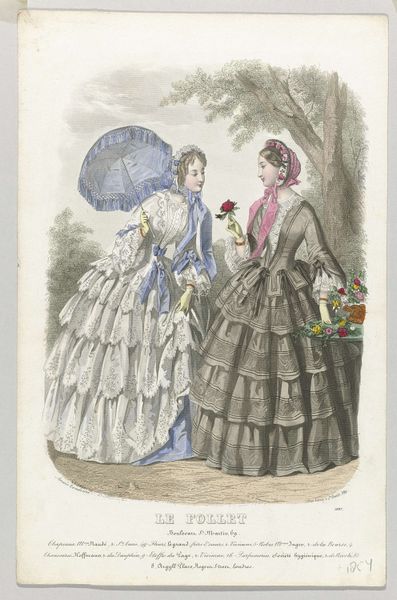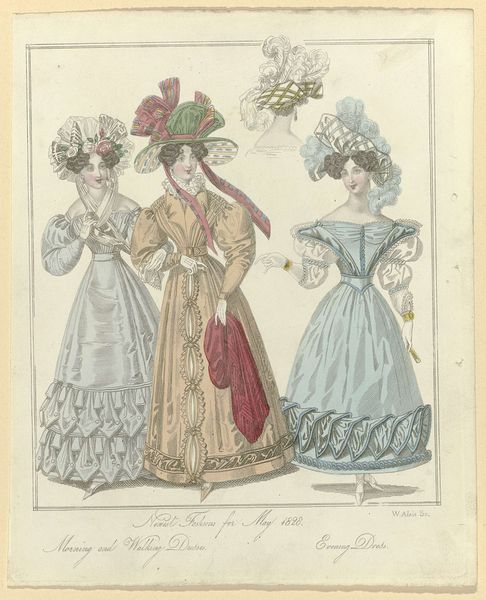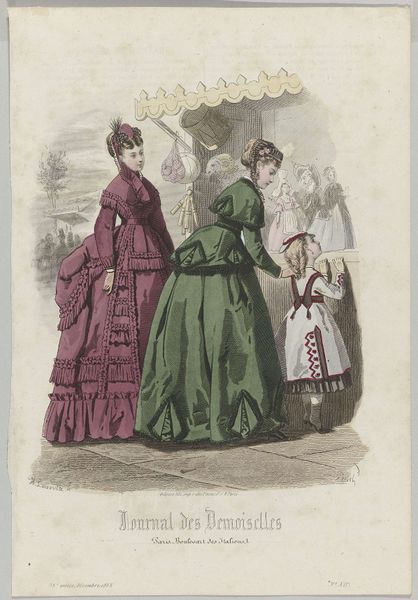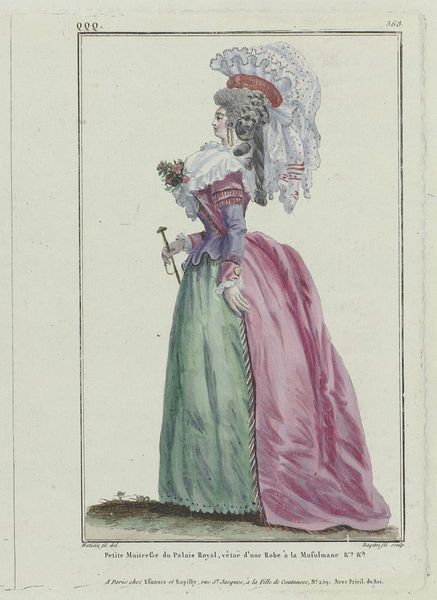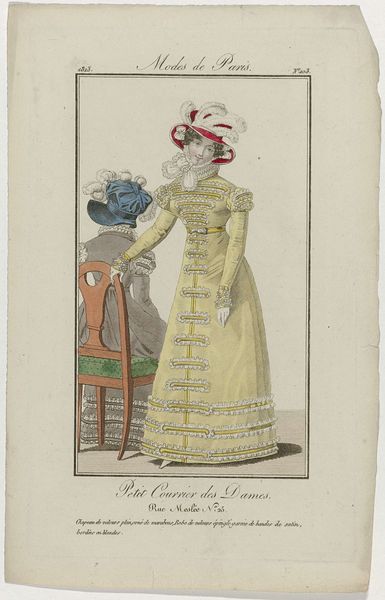
drawing, print, watercolor
#
portrait
#
drawing
# print
#
figuration
#
watercolor
#
historical fashion
#
romanticism
#
watercolour illustration
#
genre-painting
#
dress
Dimensions: height 225 mm, width 157 mm
Copyright: Rijks Museum: Open Domain
Curator: This delicate watercolor and print, titled "La Mode, 1830, Pl. 59: Toilette négligée du matin," created in 1830 by C. Heu, offers us a glimpse into the fashion of the time. Editor: My first impression is that this image is surprisingly gentle. Despite being a fashion plate, there's a quietness to the figures, a softness in the colors, and the details of clothing have some historical charm. It speaks of privilege and domesticity, doesn't it? Curator: Indeed. The composition relies on clean lines and balanced forms. Note how the artist uses subtle watercolor washes to delineate volume, particularly in the exaggerated sleeves, without sacrificing the clarity of the printed lines. The textures are implied rather than explicitly rendered, directing our eye to the overall silhouette. Editor: And the silhouette is key. Those exaggerated sleeves and the voluminous skirt practically shout Romanticism, a movement that embraced emotion and individualism. How does this fashionable "negligee," seemingly implying dishabille or comfortable indoor wear, comment on the societal expectations and gendered constraints of women in 1830? Curator: That's where the image becomes particularly intriguing. The figure is presented in what is described as a relaxed morning dress, yet the details – the elaborate hat, the precisely styled hair, and the gloves – suggest a constructed image, one that carefully mediates between private comfort and public presentation. Note the use of "negligée" as less a descriptor of being casual but more suggesting intimacy to an outer group. Editor: Precisely! The parasol held aloft could symbolize a shield against the male gaze, or is it an affectation of high society? Curator: Or, perhaps, it serves to accent the central vertical axis, a recurring motif echoed by the folds of the dress and the figure’s poised stance. Its visual weight provides a sense of grounded elegance. Editor: I keep thinking about those leg coverings. And how a print such as this becomes less about the pure artistry and instead as an indication of class aspirations and performance. Who consumed such imagery and what purpose did it serve? I wonder… Curator: Pondering questions like those makes engaging with pieces such as this worthwhile, I believe. I am left considering its structure as more than a reflection of fashion, more as a well-designed formal study. Editor: I am left contemplating its subject: more than a portrayal of fashion, more like a sign of those restricted and confined by fashion trends of their time.
Comments
No comments
Be the first to comment and join the conversation on the ultimate creative platform.

